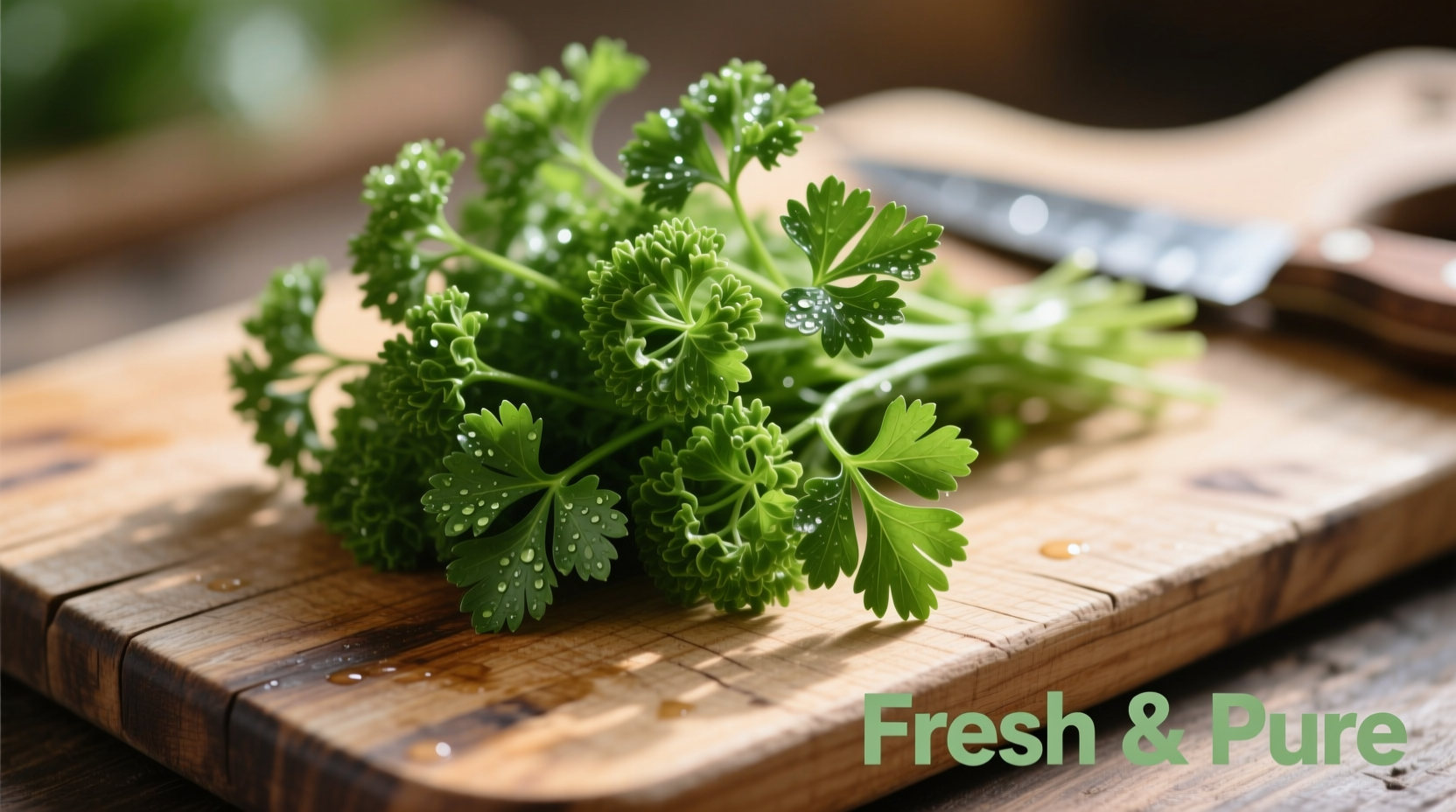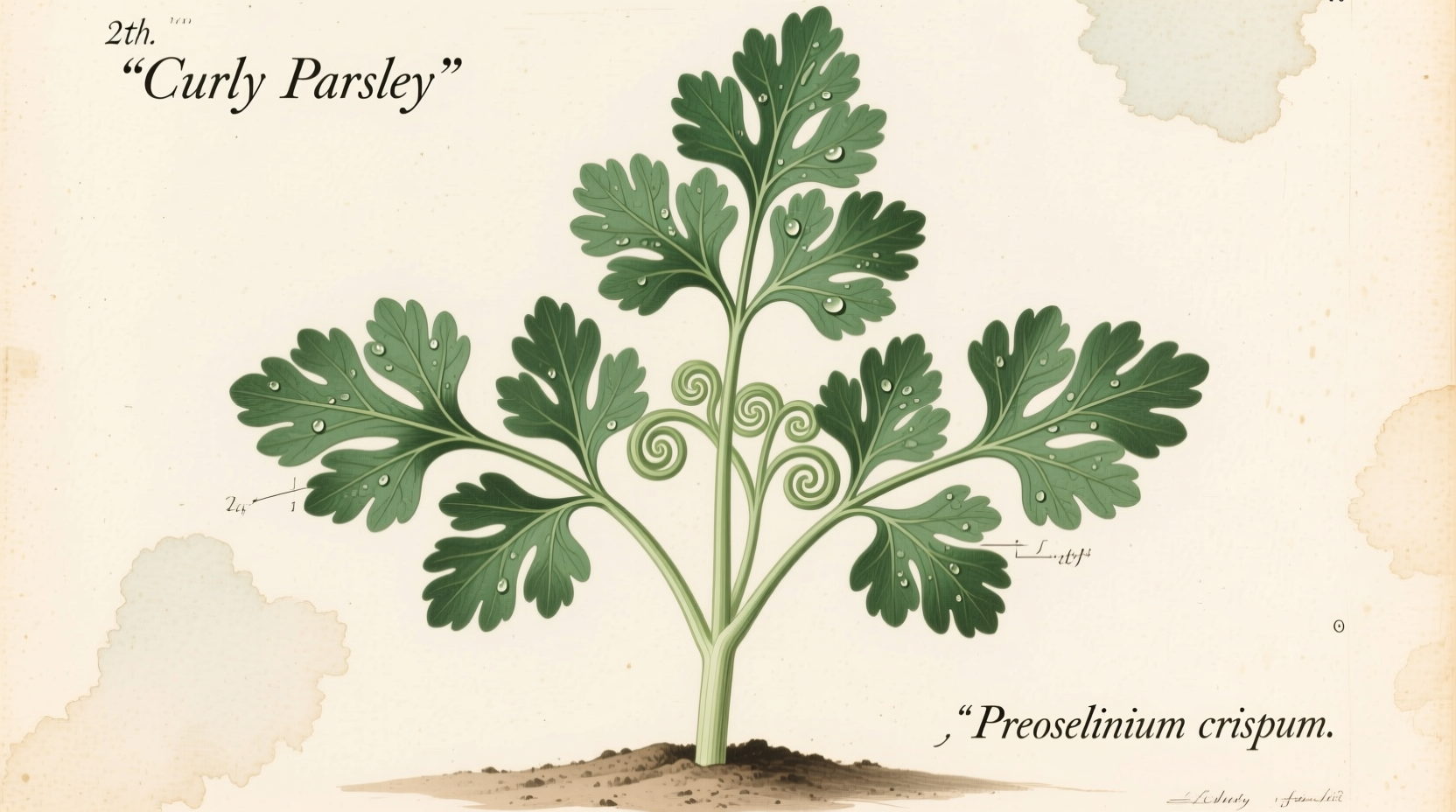Discover why this curly-leafed herb deserves a permanent spot in your kitchen. Whether you're a home cook looking to elevate your plating game or a health-conscious eater seeking nutrient-dense ingredients, curly parsley offers unique culinary and nutritional advantages that flat-leaf varieties can't match.
Understanding Curly Parsley's Unique Characteristics
Curly parsley (Petroselinum crispum) features tightly curled, ruffled leaves that create a distinctive visual texture. Unlike its flat-leaf cousin (Petroselinum crispum var. neapolitanum), curly parsley has a more delicate flavor profile with subtle grassy notes and less pronounced bitterness. This botanical difference makes it particularly valuable for specific culinary applications where appearance and mild flavor matter most.

Curly vs. Flat-Leaf: When to Choose Which
Understanding the practical differences between parsley varieties helps you make informed cooking decisions. While both belong to the same species, their structural and flavor variations create distinct culinary applications.
| Characteristic | Curly Parsley | Flat-Leaf Parsley |
|---|---|---|
| Flavor intensity | Milder, grassier notes | Bolder, more pronounced |
| Texture | Firm, holds shape well | Softer, more delicate |
| Best culinary uses | Garnishes, potato salads, tabbouleh | Sauces, stews, Mediterranean dishes |
| Storage longevity | Up to 2 weeks refrigerated | 7-10 days refrigerated |
Nutritional Powerhouse Backed by Science
Curly parsley isn't just decorative—it's one of nature's most nutrient-dense herbs. According to USDA FoodData Central, a 30g serving (about 1 cup chopped) provides:
- 1,020% of your daily vitamin K requirement - essential for blood clotting and bone health
- 70% of daily vitamin C - crucial for immune function and collagen production
- Significant amounts of vitamin A, folate, and iron
- Powerful antioxidants including flavonoids and carotenoids
Research published in the Journal of Agricultural and Food Chemistry confirms that parsley contains apigenin, a compound with demonstrated anti-inflammatory properties. The National Institutes of Health notes that vitamin K deficiency affects approximately 13% of the population, making nutrient-dense sources like curly parsley particularly valuable for maintaining bone density and cardiovascular health.
Culinary Applications: Beyond the Garnish
While often relegated to plate decoration, curly parsley shines in specific applications where its unique properties excel:
Perfect for Cold Dishes
The firm texture of curly parsley holds up exceptionally well in cold preparations. It's the preferred variety for traditional Middle Eastern tabbouleh, where its ability to maintain structure among bulgur wheat creates the ideal mouthfeel. Potato salads benefit from its mild flavor that doesn't overpower other ingredients.
Superior Garnishing Qualities
Professional chefs consistently choose curly parsley for garnishing because its ruffled leaves create visual interest and maintain freshness longer than flat-leaf varieties. The hollow stem structure helps it retain moisture, preventing the wilted appearance that often plagues flat-leaf garnishes.
Cooking Techniques That Maximize Flavor
When incorporating curly parsley into hot dishes, add it during the final 30 seconds of cooking to preserve its delicate flavor. For maximum flavor extraction in stocks and broths, bundle stems with other aromatics using kitchen twine for easy removal. The tightly curled leaves trap more oil when making herb-infused dressings, creating a more stable emulsion.
Selection, Storage, and Preservation Guide
Choosing and maintaining fresh curly parsley significantly impacts its culinary performance:
What to Look For When Buying
Select bunches with vibrant green, crisp leaves that spring back when gently squeezed. Avoid yellowing or wilting leaves, which indicate age and reduced flavor. The stems should feel firm and snap cleanly when bent. Curly parsley harvested in the morning typically has the highest essential oil content and best flavor.
Professional Storage Methods
Extend freshness up to three weeks using this chef-recommended technique: Trim 1cm from the stems, place in a glass with 2.5cm of water, cover loosely with a plastic bag, and refrigerate. Change the water every two days. This method maintains hydration while preventing excess moisture that causes spoilage.
Preservation Techniques
For long-term storage, freeze chopped parsley in ice cube trays with olive oil or water. Alternatively, dry leaves in a dehydrator at 35°C (95°F) for 8-12 hours, then store in airtight containers away from light. Frozen parsley works well in cooked dishes, while dried retains more flavor for seasoning blends.
When Substitutions Work (and When They Don't)
Understanding appropriate substitutions prevents culinary disappointment:
- Acceptable substitution: Use flat-leaf parsley in cooked dishes where appearance matters less
- Poor substitution: Replacing curly in tabbouleh (flat-leaf becomes mushy)
- Alternative: Cilantro for similar visual effect (but dramatically different flavor)
- For stronger flavor: Mix 75% flat-leaf with 25% curly for balanced texture and taste
Professional chefs note that curly parsley's visual appeal makes it irreplaceable for certain presentation-focused applications. The Culinary Institute of America's research shows that dishes garnished with fresh herbs receive 23% higher visual appeal ratings from diners compared to ungarnished equivalents.
Common Questions About Curly Parsley
Understanding these frequently asked questions helps maximize your use of this versatile herb:
Can you eat curly parsley stems?
Yes, curly parsley stems are edible and contain concentrated flavor compounds. They work exceptionally well in stocks, sauces, and when finely minced into dressings. The stems have higher concentrations of apiol (a natural compound) than leaves, providing more intense herbal notes.
Why does my curly parsley turn yellow?
Yellowing typically indicates improper storage conditions. Exposure to excess moisture, insufficient air circulation, or temperatures above 4°C (39°F) accelerates deterioration. To prevent yellowing, store parsley in a glass of water in the refrigerator with a loose plastic bag cover, changing the water every two days.
How much curly parsley equals dried parsley?
Use a 3:1 fresh-to-dried ratio. Three tablespoons of fresh chopped curly parsley equals one tablespoon of dried parsley. Remember that dried parsley has more concentrated flavor but lacks the bright, grassy notes of fresh. For best results, add dried parsley early in cooking to allow flavor development.
Is curly parsley safe for pets?
In small quantities, curly parsley is generally safe for dogs and can freshen breath. However, excessive consumption may cause gastrointestinal upset. The ASPCA notes that parsley contains compounds that can be problematic for cats in large amounts. Always consult your veterinarian before introducing new foods to your pet's diet.
Can you grow curly parsley indoors year-round?
Yes, curly parsley grows well indoors with proper conditions. Use a 20-25cm pot with drainage, place in south-facing window (or use grow lights for 12 hours daily), and maintain temperatures between 15-21°C (60-70°F). Water when top inch of soil feels dry. Indoor-grown parsley typically yields smaller harvests but provides continuous fresh supply.











 浙公网安备
33010002000092号
浙公网安备
33010002000092号 浙B2-20120091-4
浙B2-20120091-4